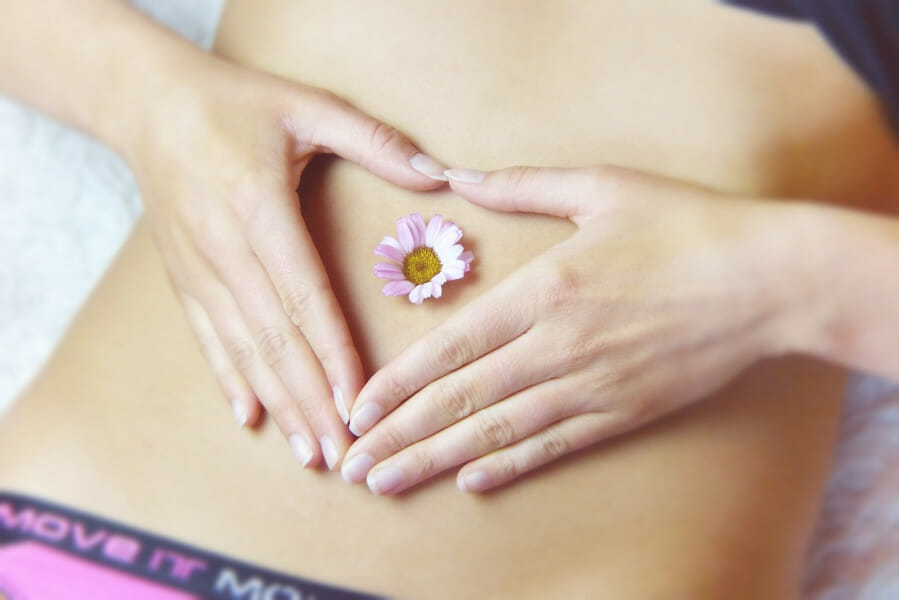The Most-Googled Skin-Care Questions And Their Replies By A Dermatologist
There’s no question that skin care can be confusing. Between 10-step routines and all the “miracle” ingredients the Internet is constantly telling you to try, figuring out what, exactly, you should be slathering on your face is no easy task. Which explains why people spent a whole lot of time this year Googling some of the same skin-care questions to help them navigate the basics of their routine.
And while Dr. Google certainly has a lot to offer, we’ll do you one better: We asked an actual doctor (board-certified dermatologist Mona Gohara, MD, to be exact) to answer some of the most-searched skin-care queries of the year. Scroll through to be schooled on everything you—and everyone else on the Internet—have ever wanted to know about skin care.
1. “How to build a skin-care routine”
Dr. Gohara’s cardinal rule for putting together a skin-care routine? “Keep it simple,” she says. “Don’t get overwhelmed, and take it one step at a time.” First, you’ll want to figure out what type of skin you’ve got (dry, oily, sensitive, combination, acne-prone, etc.), then you’ll want to figure out what you’re trying to achieve, whether that’s anti-aging, evening out your complexion, or just basic skin health. Once you’ve got that locked down, the rest is pretty simple. In the morning, Dr. Gohara recommends using a non-soap cleanser, an antioxidant (a la vitamin C), and an SPF. At night, you can use that same gentle cleanser, followed by a retinol and a lotion or cream. “Six simple steps that can make a world of difference,” she says.
2. “What order to do skin care”
When your routine is pared down to only six steps, the way Dr. Gohara recommends, it becomes a whole lot simpler to figure out the order in which to apply them. Start with a cleanser, then apply your treatment (vitamin C in the morning, retinol at night), and finish things off with your SPF or moisturizer. If you’re going to add a toner into the mix, use it between your cleanser and serum, and in the case of an eye cream, apply on top of your moisturizer.
3. “What is AHA in skin care?”
AHAs—or, “alpha hydroxy acids”—are chemically exfoliating acids that are derived from plant substances, like sugar cane, milk, and grapes. You may know them as “glycolic,” “lactic,” or “mandelic,” all of which are members of the AHA family. These types of acids work to melt away dead skin cells from the surface of your skin. “Chemical exfoliants break through the glue that holds dead skin cells together, which gives room for the new skin cells to come out,” says Dr. Gohara. This process helps to brighten skin, unclog pores, and stimulate collagen (which helps with the appearance of fine lines and wrinkles).
4. “How to get rid of acne”
We could write an entire book on how to get rid of acne—there are all kinds of different types and different treatments—but Dr. Gohara has a few basic tips worth taking to heart. First things first: Consult with a board-certified dermatologist to come up with a plan. “In your routine, be sure to wash your face every morning and night, and exfoliate regularly with chemical exfoliants like glycolic and salicylic acid, which help to whisk away oil and keep a breakout from coming on,” she says. “If you’re in the throes of a breakout, keep it simple with your products. If you’ve only got a couple of zits, use a spot treatment with benzoyl peroxide or an exfoliating mask to help dry out the zit and clear your pores. Then slather on a skin-barrier supporting serum to calm inflammation.” If your skin is oily, finish off with a light lotion. If your skin is dry, use a heavier cream. And one more thing? You may want to try a retinol—which you can get from your derm or over the counter—which will help stimulate cell turnover and get rid of the bacteria-trapping dead skin cells that lead to acne.
5. “What does vitamin C do for your skin?”
According to Dr. Gohara, vitamin C serum is like the “little black dress” of your routine. “It makes absolutely everybody look better,” she says. “It’s an antioxidant that scavenges free radicals, resulting in brighter, better functioning skin.” Free radicals lead to cell damage and cell death (the process is called “oxidation), which causes signs of skin aging. “Vitamin C is frequently tapped as a brightening agent, because, thanks to its antioxidant prowess it can decrease the formation of melanin, and some studies have also shown that it’s a potent anti-inflammatory that can help with the symptoms of acne and rosacea.” Plus, because it’s an antioxidant, it can help protect from environmental factors like pollution, which is why it’s worth slathering on every morning.
6. “What does hyaluronic acid do?”
Hyaluronic acid is skin care’s all-star ingredient for dealing with dry skin. It’s what we call a “humectant,” which means that it attracts water from the environment and draws it into your skin. The acid occurs naturally in your skin, and can be applied topically whenever you need a little extra oomph.”Skin can get really and need some H2O, but just splashing water on your face isn’t going to do the trick—you need ingredients that hold water within your complexion, which is why time and time again, we turn to good old hyaluronic acid,” says Dr. Gohara. “It’s most commonly referred to as a moisture magnet because its job is to bind water and hold it underneath your skin.” Its biggest claim to fame? The fact that it can hold 1,000 times its weight in water. You’ll find hyaluronic acid listed as an ingredient in a lot of hydrating products, and when using a hyaluronic acid serum, your best bet is to apply it as the final step before your moisturizer.
7. “What does toner do for your face?”
Back in the day, the term “toner” was used to describe alcohol-based astringents that were used to remove oil from the skin (which tended to strip your barrier). But in recent years, the product category has expanded to include a lot of different things, ranging from hydrating products to exfoliating ones. “There are some areas where toners can be beneficial,” says Dr. Gohara, though she adds that they’re not essential elements of any routine. “For people with combination skin who need a little extra love, for example, toners may be exactly the right product. You can put hyaluronic acid-based toners in areas where you need some more hydration, you can put toners that have AHAs and BHAs in areas where your pores need a little extra love and care.” Think of toner as the cherry on top of your skin-care routine: It’s not necessarily a “must-have,” but more of a “nice to have.”
8. “What is combination skin?”
To put it simply, “combination skin” means that your skin isn’t exactly the same all over. “We don’t all fit perfectly into one skin-care bucket, which is why ‘combination skin’ is the perfect skin-care descriptor for most of us,” says Dr. Gohara. “Some people skew more toward the oily side, while others are drier, but in general we all have patches of oily skin in some places and dry skin in others.” The trick to dealing with it? Understanding which areas are which, and targeting your products appropriately.














